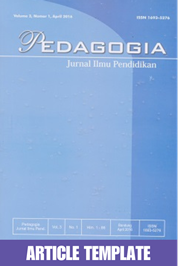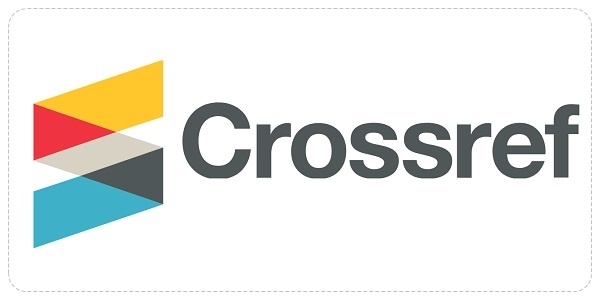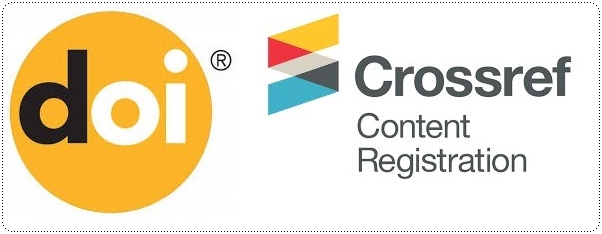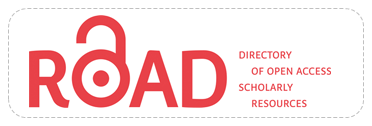Uplifting Students' Interest and Ability in Chemistry by PJBL- STEM Model
Abstract
The PISA 2006-2018 report shows a less significant development of our country's literacy and scientific abilities. Hard work and more efficient methods are needed for the development of education in Indonesia, especially chemistry which is known as the central of science. The STEAM learning approach is believed to be able to improve the quality of learning, and make it interesting. The approach used in this research is the class observation of the Project Based Learning (PjBL) method, the STEAM (Science Technology Engineering Art Mathematic) approach, which is carried out by the students of SIS Kelapa Gading-Jakarta. There were two student groups who were observed completing assignments per semester over a period of 3 semesters (2 academic years). PjBL learning is better in terms of completeness than Non-PjBL. The difference in the percentage of task completeness is between 20-32%, the difference in value is between 10-24%. Furthermore, PjBL learning with STEAM is better than Non STEAM, with a difference in the percentage of task completeness 12%, the difference in value is 9%. This is because it makes students more engaged, happy, motivated, more understanding and in accordance with the learning needed in the 21st century.
Keywords
Full Text:
PDFReferences
Anazifa, R. D., & Djukri, D. (2017). Project-based learning and problem-based learning: Are they effective to improve student’s thinking skills?. Jurnal Pendidikan IPA Indonesia, 6(2), 346-355.
Asghar, A., Ellington, R., Rice, E., Johnson, F., & Prime, G. M. (2012). Supporting STEM education in secondary science contexts. Interdisciplinary Journal of Problem-Based Learning, 6(2), 4.
Awaliyah, C. R. (2016). Implementation of the pjbl model with the stem approach to improve concept mastery and creativity of middle school students in ecosystem materials (Doctoral dissertation, Indonesian University of Education).
Burt, B. A., & Johnson, J. T. (2018). Origins of early STEM interest for Black male graduate students in engineering: A community cultural wealth perspective. School Science and Mathematics, 118(6), 257-270.
Bustamante, A. S., Greenfield, D. B., & Nayfeld, I. (2018). Early childhood science and engineering: Engaging platforms for fostering domain-general learning skills. Education Sciences, 8(3), 1-13.
Chamizo, J. A. (2017). The fifth chemical revolution: 1973–1999. Foundations of Chemistry, 19, 157-179.
Egenrieder, J. A. (2010). Facilitating student autonomy in project-based learning to foster interest and resilience in STEM education and STEM careers. Journal of the Washington Academy of Sciences, 96(4), 35-45.
Fajra, M., & Novalinda, R. (2020). Project Based Learning: Innovation to improve the suitability of productive competencies in vocational high schools with the needs of the world of work. International Journal Of Multi Science, 1(08), 1-11.
Fraenkel, J. R., Wallen, N. E., & Hyun, H. H. (2012). How to design and evaluate research in education (8th ed.). McGraw-Hill.
Garg, K. C. (2019). PhD theses accepted by Aligarh Muslim University (AMU) in the discipline of chemistry: A Bibliometric Study (1935-2014). Journal of Indian Library Association, 54(2), 73-78.
Hadiyanti, N. F. D., Prihandoko, A. C., Murtikusuma, R. P., Khasanah, N., & Maharani, P. (2021, March). Development of mathematics e-module with STEM-collaborative project based learning to improve mathematical literacy ability of vocational high school students. In Journal of Physics: Conference Series (Vol. 1839, No. 1, p. 012031). IOP Publishing.
Heuser, B. L., Wang, K., & Shahid, S. (2017). Global dimensions of gifted and talented education: The influence of national perceptions on policies and practices. Global Education Review, 4(1), 4-21.
Keiler, L. S. (2018). Teachers’ roles and identities in student-centered classrooms. International journal of STEM education, 5(1), 1-20.
Kelley, E. W. (2021). LAB theory, HLAB pedagogy, and review of laboratory learning in chemistry during the COVID-19 pandemic. Journal of Chemical Education, 98(8), 2496-2517.
Kemendikbud. (2019). Hasil PISA Indonesia 2018: Akses Makin Meluas, Saatnya Tingkatkan Kualitas.https://www.kemdikbud.go.id/main/blog/2019/12/hasil-pisa-indonesia-2018-akses-makin-meluas-saatnya-tingkatkan-kualitas
Komarudin, U. (2016). Penggunaan E-Book Berbasis STEM Untuk Meningkatkan Penguasaan Konsep Siswa dan Technology Engineering Literacy Siswa (Doctoral dissertation, Universitas Pendidikan Indonesia).
Krug, D., & Shaw, A. (2016). Reconceptualizing st® e (a) m (s) education for teacher education. Canadian Journal of Science, Mathematics and Technology Education, 16(1), 183-200.
McComas, W. F., & Burgin, S. R. (2020). A critique of “STEM” education: Revolution-in-the-making, passing fad, or instructional imperative?. Science & Education, 29(4), 805-829.
Nuhfer, E. B., Cogan, C. B., Kloock, C., Wood, G. G., Goodman, A., Delgado, N. Z., & Wheeler, C. W. (2016). Using a concept inventory to assess the reasoning component of citizen-level science literacy: Results from a 17,000-student study. Journal of microbiology & biology education, 17(1), 143-155.
OECD. (2019). PISA 2018. http://www.OECD.org/PISA2018Database
Pedersen, S., & Liu, M. (2003). Teachers’ beliefs about issues in the implementation of a student-centered learning environment. Educational Technology Research and Development, 51(2), 57-76.
Permanasari, A., Rubini, B., & Nugroho, O. F. (2021). STEM education in Indonesia: Science teachers’ and students’ perspectives. Journal of Innovation in Educational and Cultural Research, 2(1), 7-16.
Petillion, R. J., & McNeil, W. S. (2020). Student experiences of emergency remote teaching: Impacts of instructor practice on student learning, engagement, and well-being. Journal of Chemical Education, 97(9), 2486-2493.
Sahin, A. (2015). STEM students on the stage (SOS): Promoting student voice and choice in STEM education through an interdisciplinary, standards-focused project based learning approach. Journal of STEM Education, 16(3), 1-10.
Seymour, E., Hunter, A. B., & Harper, R. P. (2019). Talking about leaving revisited. Springer.
STEM Indonesia. (2020). Menjadikan belajar lebih menarik. https://stem.id/stem-menjadikan-belajar-lebih-menarik/
Syukri, M., Yanti, D. A., Mahzum, E., & Hamid, A. (2021). Development of a PjBL model learning program plan based on a stem approach to improve students’ science process skills. Jurnal Penelitian Pendidikan IPA, 7(2), 269-274.
Tabiin, A. (2020). Implementation of steam method (science, technology, engineering, arts and mathematics) for early childhood developing in kindergarten mutiara paradise pekalongan. Early Childhood Research Journal (ECRJ), 2(2), 36-49.
Tiantong, M., & Siksen, S. (2013). The online project-based learning model based on student’s multiple intelligence. International Journal of Humanities and Social Science, 3(7), 204-211.
Uziak, J. (2016). A project-based learning approach in an engineering curriculum. Global Journal of Engineering Education, 18(2), 119-123.
Wahono, B., Chang, C. Y., & Khuyen, N. T. T. (2021). Teaching socio-scientific issues through integrated STEM education: an effective practical averment from Indonesian science lessons. International Journal of Science Education, 43(16), 2663-2683.
Woldeamanuel, M., Atagana, H., & Engida, T. (2014). What makes chemistry difficult? African Journal of Chemical Education, 4(2), 31-43.
DOI: https://doi.org/10.17509/pdgia.v20i3.47343
Refbacks
- There are currently no refbacks.
INDEXED BY

This work is licensed under a Creative Commons Attribution-ShareAlike 4.0 International License
















